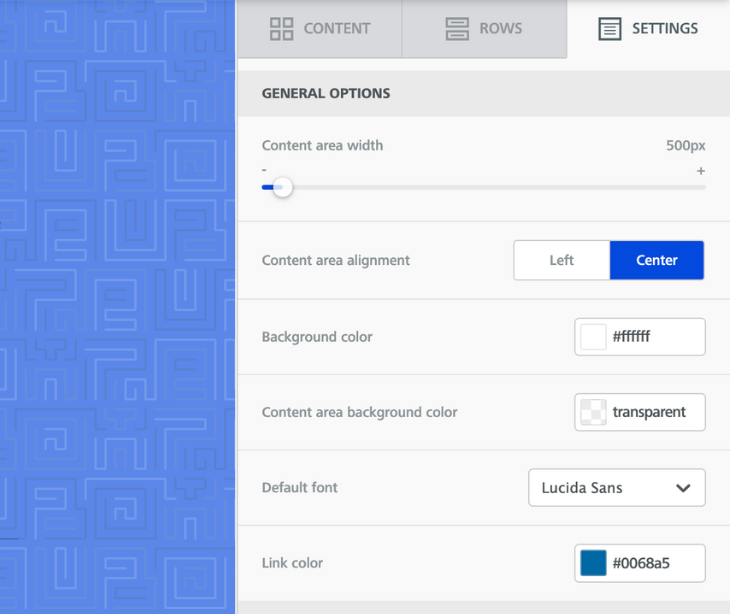
Demographic email marketing allows businesses to refine their marketing approach and truly connect with their diverse audience base. A GetResponse report reveals only 31% of businesses employ basic segmentation. The same report shows 13% use advanced segmentation in their email automation efforts revealing a severely underserved market. By combining the principles of inclusive communication with the use benefits of HIPAA compliant email marketing healthcare organizations can take a well rounded approach to communicate with patients.
Understanding demographics and audience segmentation
Based on a BMC Public Health research article, researchers used the following interpretation of segmentation: “Segmentation is considered as a key benchmark criterion for effective social marketing practice by many authors who have included segmentation in their social marketing frameworks. Segmentation comprises of three main parts: first, finding homogenous segments within a bigger heterogeneous group, second, assessing and choosing one or several segment(s), and finally developing a program, service or communication strategy matched to the target segment(s) unique needs, wants and characteristics.”
Demographic and audience segmentation is a marketing strategy that divides a large pool of target markets into subsets of consumers who have common needs, interests, and priorities. This strategy uses demographics, which are statistical data relating to the population and particular groups within it. The source of this information is often market research, surveys, and population censuses, providing valuable insights into consumer behavior and preferences.
Problems with limited inclusion in demographic email marketing
- Patients from underrepresented groups might feel excluded if the content does not reflect their specific health concerns or cultural considerations.
- Limited inclusion can result in missed opportunities for healthcare organizations to address health disparities and improve outcomes for all patient groups.
- There could be a risk of violating patient privacy and trust if demographic segmentation is not handled with sensitivity to HIPAA and other privacy regulations.
- A lack of personalized health information might lead patients to seek resources outside of their healthcare provider, potentially compromising their care.
- Patients might perceive the healthcare organization as out of touch or insensitive to their needs, damaging its reputation.
- Healthcare organizations could see lower rates of patient compliance with treatment plans if communications do not effectively address or engage diverse patient groups.
- Patient loyalty and retention might decrease if individuals do not feel seen, heard, or valued by their healthcare provider.
- Not including diverse patient perspectives could limit the effectiveness of public health campaigns and community health initiatives.
Inclusive email design and content
Inclusivity allows email content to resonate with a diverse audience. An Adobe study discussed the benefits of leveraging conversation intelligence data, with 41% of healthcare marketers reporting that such data has led or is expected to lead to enhanced patient experiences. This data allows marketers to tailor their communications to the specific interests and needs of different patient groups. By doing so, email marketing inclusivity fosters a sense of belonging among recipients and enhances engagement and trust.
See also: How to build inclusive HIPAA compliant email marketing campaigns
Best practices for inclusive HIPAA compliant email marketing
- Diverse language options: Offer emails relevant to your audience's demographics in multiple languages to enhance accessibility and engagement.
- Accessible email design: Use accessible design features such as high-contrast text for those with vision impairments, large font sizes, and responsive layouts that are easy to navigate on any device. Use clear headings and bullet points to make the content easy to scan.
- Culturally diverse and respectful content: Make sure your content reflects the diversity of your audience, including diverse imagery, health concerns, and wellness practices. Avoid cultural stereotypes and ensure that health information applies to all cultural backgrounds represented in your audience.
- Tailor content to segment needs: When segmenting by demographics, tailor content to address specific health concerns or interests that may be more prevalent within certain segments. This personalization should be based on well-researched data and done in a way that avoids assumptions or generalizations.
- Review by diverse teams: Have your content reviewed by a diverse team to catch any unintentional bias or insensitivity. This can include individuals from different cultural backgrounds, age groups, and abilities.
- Training on cultural competency: Train your marketing team on cultural competency so that they are aware of best practices in creating inclusive and legally compliant email content.
- Use of personalization tokens carefully: When personalizing emails, use tokens (like name, location) judiciously to make sure the content remains relevant without making assumptions about the recipient's preferences or identity.
See also: Top 12 HIPAA compliant email services
FAQs
How can I collect demographic data ethically?
Collect demographic data through transparent methods, such as customer surveys or during account sign-up processes. Always inform your audience about how you intend to use their data and ensure you have their consent.
Can inclusive email marketing improve campaign performance?
Yes, inclusive email marketing can significantly enhance campaign performance. By respecting and acknowledging the diversity of your audience, you increase engagement rates, open rates, and ultimately, the effectiveness of your marketing efforts.
How frequently should I review and update my segmentation strategy?
While the goal is to update segmentation strategies yearly, this should be done according to the discrepancies detected in inclusivity and diversity-based audits performed on a more regular basis.
Subscribe to Paubox Weekly
Every Friday we'll bring you the most important news from Paubox. Our aim is to make you smarter, faster.




